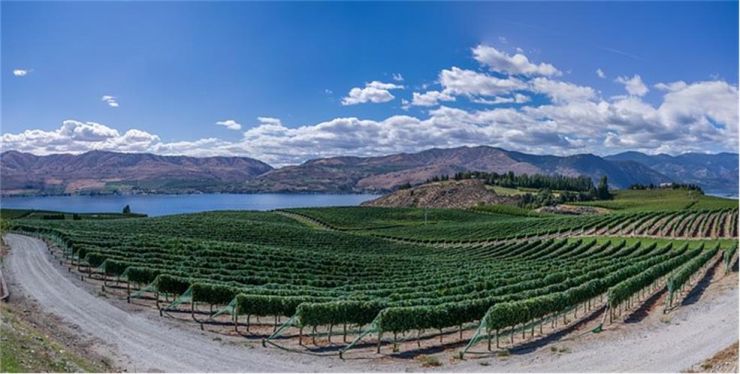What Is Terroir and How Does It Affect Wine?
Terroir is all of the aspects of winemaking not controlled by humans that determine the flavor and taste of wine – predominantly climate, topography and soil.
As these factors vary by country and region, the flavors and tastes of wines produced in different regions of the world are often distinctive.
Climate includes a number of factors
Climate (e.g., desert, maritime, continental) encompasses such factors as proximity to water, number of warm, sunny days during the growing season, altitude and annual weather patterns.
Bodies of water moderate climatic conditions
Proximity to water provides a desirable temperature moderating effect – in cool (continental) climates, proximity to water delivers a warming effect; whereas, proximity to water in warmer (maritime) climates provides a cooling effect.
The number of warm, sunny days matters
Grape vines become active when the temperature is above 50 ⁰F. So, the number of warm, sunny days during the growing season is a significant factor affecting grape budding and ripening.
Altitude affects wine production
Altitude affects temperature, with cooler temperatures being correlated with higher altitudes. Temperature tolerance varies by grape variety. Hence, the types of grapes grown, how they are grown and the characteristics of the wines they produce are heavily influenced by vineyard altitude. As an example, to capture the warmth emanating from the earth, vines are trellised closer to the ground in Bordeaux than they are in California.
Annual weather patterns impact the vine
Annual weather patterns, such as wind, rain, drought, frost and hail, impact the vine.
Depending on its temperature, wind either cools or warms the vine. A key benefit of wind is that it dries the vine, thereby preventing rot. On the other hand, wind may damage the vine if too strong.
Rain provides much needed irrigation for the vine at certain points in time, but too much of it results in diluted wine. Some grapes thrive in drought (e.g., Granache), whereas others (e.g., Pinot Noir) shut down.
Frost and hail are never good for the vine. Frost can be combated with heaters, bon fires, delayed pruning of the vine or spraying the vine with water. Hail, which breaks the skin of grapes, sadly results in diminished crops.
Vines planted on slopes do best
Slopes are better for grape vines than is flat land. This is because slopes provide better drainage, erosion removes topsoil and wind has better access to the vine. As grape vines do not thrive with wet roots, the better drainage of a slope improves vine health and vitality. Because the best wines are produced from the fruit of vines that obtain their nutrients from minerals in the subsoil, the erosion of topsoil from a sloped vineyard is desirable. And as previously mentioned, wind helps prevent rotting of the vine.
Different grapes favor different soil types
The type of soil in a wine growing region influences which grapes are grown and also impacts the flavor of the wine produced from those grapes. Mineral richness, found in the subsoil, contributes to vine health and adds structure and complexity to wine. Soil types include clay, sand, limestone, schist, chalk and slate.
Clay, a heavy soil, has lots of minerals in the subsoil and is favored by the Merlot and Pinot Noir grapes.
Sand provides good drainage for the vine, retains heat and is poor in organic nutrients (good for the vine as it will have to search for mineral nutrients in the subsoil). Sand is preferred by the Cabernet Sauvignon and Syrah/Shiraz grapes.
Limestone is a hard soil through which the grape vines are forced to push through natural cracks in order to reach the subsoil for nutrients. Grapes which thrive in limestone include Chardonnay, Pinot Noir, Nebbiolo and Sangiovese.
Chalk, a special type of limestone, gives good drainage, is organically infertile and is well-liked by the Chardonnay and Pinot Noir grapes.
Schist is a course, crystaline rock that reflects heat (warming the vine) and is preferred by drought-resistant grapes such as the Tempranillo grape.
Slate is a special form of schist. It holds heat and (needed) moisture. Slate is favored by such grapes as Riesling and Pinot Gris.
"Terroir is all of the aspects of winemaking not controlled by humans that determine the flavor and taste of wine – predominantly climate, topography and soil."



